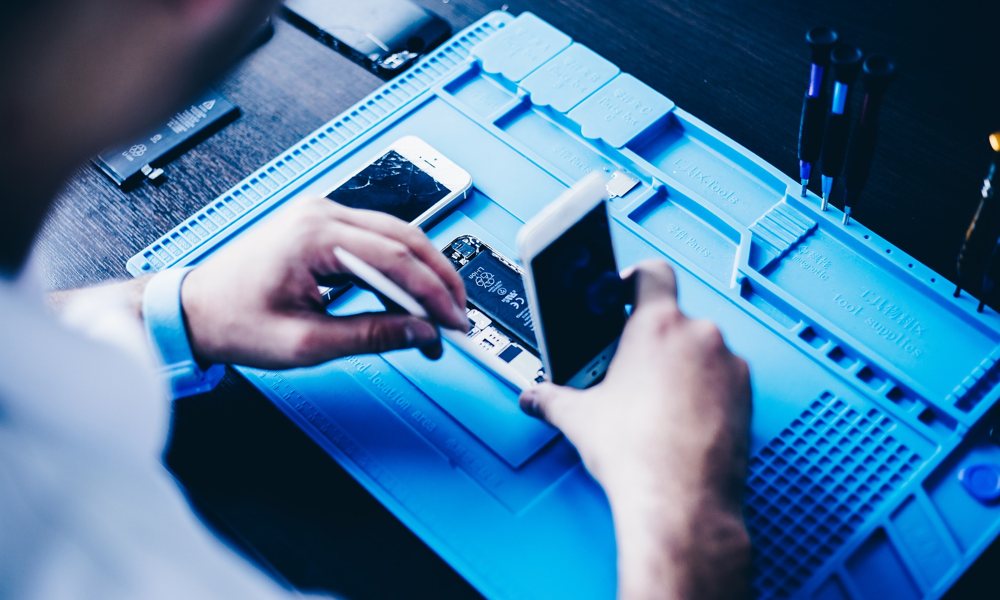President Trump ‘Absolutely’ Believes Apple Could Manufacture iPhones in the US

Toggle Dark Mode
President Donald Trump “absolutely” believes that Apple has the resources to assemble its iPhone and other devices inside the borders of the United States, said Trump Press Secretary Karoline Leavitt during a media briefing earlier today.
When asked by a reporter whether President Trump believed that iPhone manufacturing could be brought home to the US, Leavitt said, “Absolutely, he believes we have the labor, we have the workforce, we have the resources to do it.”
She pointed to the $500 billion investment in the US that Apple promised to make earlier this year: “and as you know, Apple has invested $500 billion here in the United States, so if Apple didn’t think the United States could do it, they probably wouldn’t have put up that big chunk of change.”
Starting Wednesday, April 9, Trump will impose stiff tariffs on products from several countries, including China, India, Thailand, Vietnam, and the European Union. Apple manufactures most of its devices and accessories in those countries, meaning prices for Apple products could be in for a massive jump.
Trump has said that if Apple and other companies don’t want to pay the tariffs, then they should assemble their products inside US borders. While Trump “absolutely” believes Apple could move production back to the US, Apple has a complex supply chain that would also likely need to be transferred to the States, which would be a costly proposition.
Apple and its suppliers would also be faced with finding enough skilled labor in the US, as such manufacturing has long been moved abroad. In 2017, Apple CEO Tim Cook said Apple assembles its iPhones in China due to its advanced manufacturing capabilities.
… The popular conception is that companies come to China because of low labor costs. I’m not sure what part of China they go to, but the truth is China stopped being the low labor cost country many years ago. The reason is because of the skill, the quantity of skill in one location, and the type of skill it is.
Like the products we do require really advanced tooling, and the precision that you have to have in tooling and working with the materials we do are state of the art. And the tooling skill is very deep here. You know, in the U.S. you could have a meeting of tooling engineers, and I’m not sure we could fill the room. In China, you could fill multiple football fields. It’s that vocational expertise is very deep.
Apple CEO Tim Cook
US Secretary of Commerce Howard Lutnick recently made comments similar to Trump’s about iPhone manufacturing. As reported by 404 Media, Lutnick said that the “army of millions and millions of people screwing in little, little screws to make iPhones, that kind of thing is going to come to America.” This suggests the Trump administration may not have a firm grasp of how Apple operates.
The 404 Media article also includes a 27-page Apple supplier list [PDF], listing the more than 50 countries where companies manufacture components for Apple’s devices. Apple also uses rare earth minerals that can’t be mined in the US, forcing them to be sourced from 79 countries.
This means Apple could not avoid all tariffs, even if they somehow moved all assembly processes back to the US, as it isn’t feasible to manufacture all of the needed components inside US borders.
Despite Cook’s comments that “China stopped being the low labor cost country many years ago,” the cost of living and wages in the United States tends to be much higher than in countries Apple deals with, meaning the price of an iPhone, iPad, or Mac would still rise precipitously.
Trump had previously announced a 54% on products from China but has since increased the tariffs by another 50%, meaning that starting tomorrow, goods from China will be hit with a 104% tariff.
Apple has not officially commented on the tariffs, but it has been flying in iPhones from India and China and stockpiling them in US warehouses in advance of the tariffs coming into effect. Analysts suggest it may also be looking to shift more manufacturing to India, as tariffs on Indian products are lower, allowing Apple to offset some of the costs of importing devices from China.







